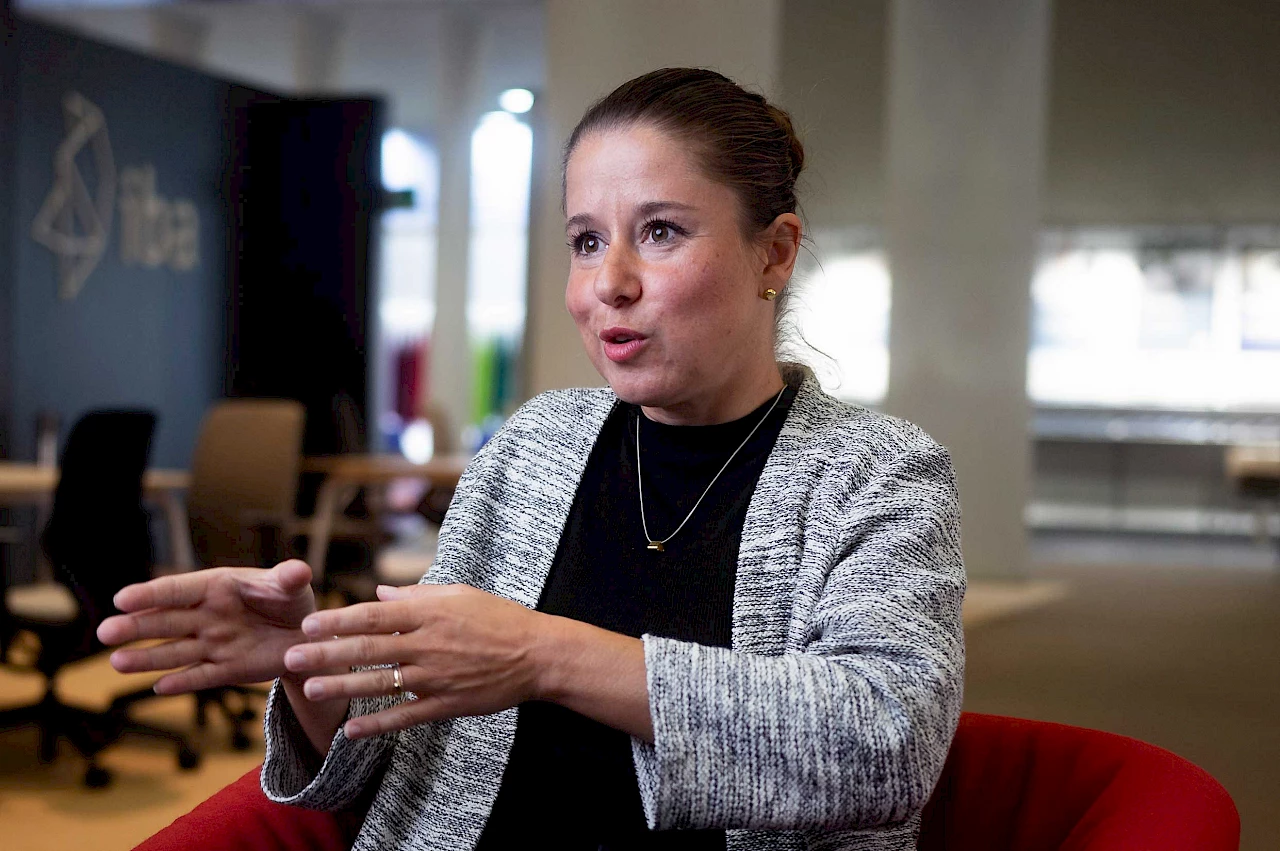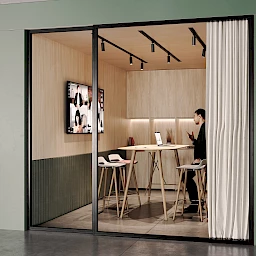Sophia Klees, the co-founder of the lighting design firm jack be nimble, gave a presentation at ORGATEC about the challenges faced by lighting design in the new office era. We took this opportunity to have another conversation with Sophia Klees.
Ms Klees, workstations have become much more flexible in recent years. That has brought new kinds of furnishings, as well as new interior design concepts, into offices. What has happened in the field of lighting?
By comparison with the changes in interior design, the transformation in the field of lighting took place quite late through the introduction of LED technology. This motivated people to come up with new options and do some rethinking. However, it took quite a while for them to genuinely realize the importance of good lighting at the workstation. Before this transformation, the basic lighting in companies was often diffuse and linear, in the form of fluorescent tubes. Work processes and workstations have become flexible in recent years, and the office is where a company’s corporate culture is experienced directly. That is also putting a stronger focus on lighting design, which develops concepts for the optimal use of artificial light and daylight for a variety of working situations and user needs.
Lighting design creates a bridge between design and planning for building services engineering and supports the implementation of individual lighting concepts.
People and their needs are increasingly becoming the central focus of office planning. What does this mean for lighting design and lighting concepts in practical terms?
The working world has shifted from “All of us have to function” to “Who are we, actually? And when we’re feeling well, we’re productive.” What does this mean for lighting? Each individual has different requirements. Companies need rooms with lighting that can be changed to suit individual requirements. The two points I see here are flexibility and contrast. First of all, it’s important to have lighting with different aspects, should which we provide within the office context in the form of varying degrees of brightness and qualities, colours, and types of light. We should also make the lighting partly controllable by individual users. In the future, lighting concepts will combine various qualities and aspects of light in the overall office environment in order to offer office workers more than just the kind of diffuse light source that is still used as basic office lighting today. Moreover, contrasts and changes of scene will become more important—for example, employees will have the opportunity to use different spaces and lighting setups for different types of work.
Now let’s look in detail at the office of the future. In your opinion, what are the trends that companies will be following in the future in terms of their lighting?
I believe there are three different approaches. One of them is digitalization, which is developing very quickly at the moment, and the resulting control of light via apps and smart technology. In the near future, sensors will detect individual moods and requirements and control the lighting for the employees on an individual basis. The second approach reflects the fact that external spaces are being increasingly integrated into the office world and consequently their lighting is becoming relevant. In the future, employees will have more opportunities to use external spaces during their working time. That’s why companies must focus on having a good and harmonious lighting design.
The last approach, even though it’s only a vision at the moment, is to have cable-free electricity in the office. This would revolutionize office construction. It would make it unnecessary to plan supply lines early on in the skeleton stage of construction, before design decisions have to be made. Planning where to install empty conduits etc. would no longer be needed. Renovations could be much more individualized, and the lighting could be more flexible. Employees could then use individual lighting elements and expand them as desired. The first steps in this direction are today’s plug-and-play systems, which use a single supply line to which several lighting elements with different lighting characteristics can be connected one after the other. New products on the market include versatile lighting systems whose core element is a conductive textile tape that makes it possible to freely attach lighting elements and flexibly modify them. As a result, individualized and flexible lighting solutions can be created wherever they are needed.
In your opinion, what are the critical success factors in lighting design?
We have to become more agile in general and make the user the central focus of our thinking. This is where the design thinking approach can help, thanks to its “Fail early and often” principle and the creation of prototypes at an early stage. In addition, we must have the self-confidence to ask critical questions about currently accepted norms. Do we always have to have more light, or might it perhaps make more sense to strike out in new directions and adapt the relevant lighting qualities more closely to human needs? In order to have good lighting, it’s always important to have an interplay between various light qualities and atmospheres. We also have to create contrasts by leaving darker spaces that enable people to experience light more consciously. In this connection, sustainability is also more important than ever. Do we need so much light? And where do we need it? How sustainable are the materials we are using today, and how should lighting elements be designed in the future so that they meet the requirements of a circular economy? A lot depends on exploring sustainable materials such as cornstarch, which has already been used to produce initial prototypes of lighting elements. The fact that more and more companies are considering how they can make use of interchangeable LED lighting elements is a nudge in the right direction toward making the lighting industry more sustainable. The concept of networking is driving me as well. I believe it’s important to make sure that in the future architects, lighting designers and building services engineering cooperate much more closely on projects and act as equal partners as they search for the best solution.
Ms Klees, thank you for the interview.







